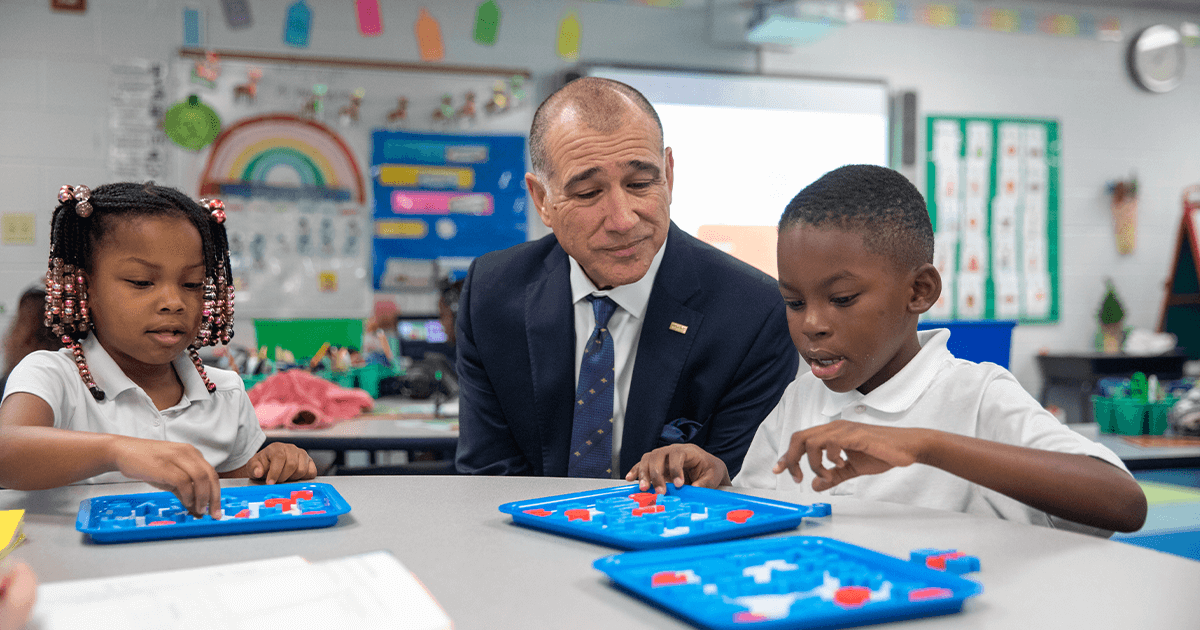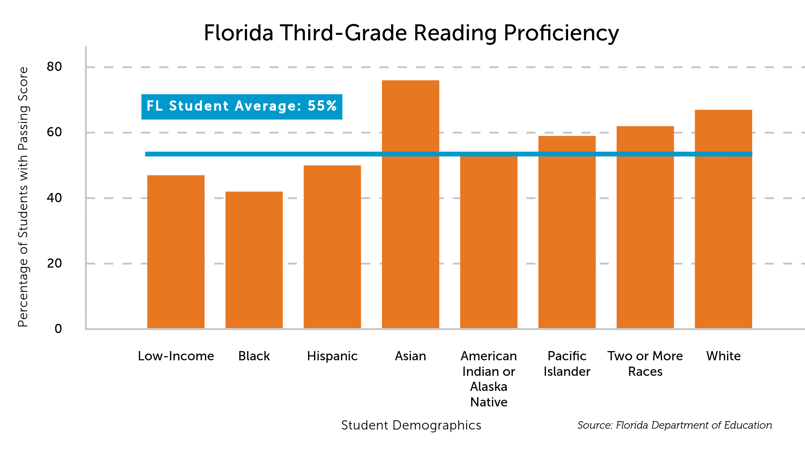
The Florida third-grade reading proficiency data from the Florida Department of Education’s 2024 FAST Assessment shows that low-income, Black and Hispanic students had the lowest passing third-grade reading proficiency scores in Florida.
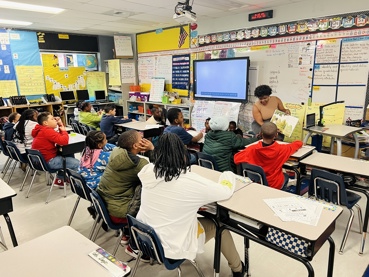 In short, these are the largest populations of students struggling the most. In Florida, low-income and historically underrepresented students comprise the largest subpopulation that needs the most help - particularly in our three target communities (West Central, Central and South Florida).
In short, these are the largest populations of students struggling the most. In Florida, low-income and historically underrepresented students comprise the largest subpopulation that needs the most help - particularly in our three target communities (West Central, Central and South Florida).
When it comes to our youngest learners, 55% of Florida’s public school third graders are proficient readers. However, reading proficiency is below average for Black (42%) and low-income (47%) third graders in the state. While Florida students are enrolling in college after high school at an average of 54%, the college-going rate is lower for Black (47%) and low-income students (48%) in Florida.
That is why Helios is zeroing in on improving outcomes for low-income and historically underrepresented students in Florida. To increase college graduation rates for these students—and use what we learn to increase achievement for all students—we are focusing on three key drivers essential to getting these subpopulations on track for college attainment:
We are focusing on these three areas because we believe they provide the best leverage for ensuring that students are prepared for and on the path to a college degree. Ultimately, Helios seeks to ensure that all children in Florida have the full potential to succeed in an educational pathway that will take them where they want to go.
Learn more about the programs we’re supporting throughout Florida:

The Florida third-grade reading proficiency data from the Florida Department of Education’s 2024 FAST Assessment shows that low-income, Black and Hispanic students had the lowest passing third-grade reading proficiency scores in Florida.
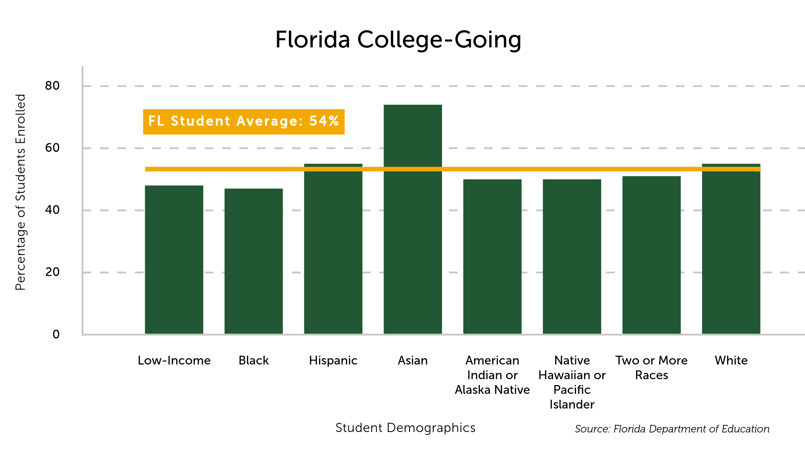
The Florida college-going data from the Florida Department of Education’s 2023 Know Your Schools Portal includes Florida public high school students enrolling in a Florida postsecondary institution within 16 months after graduation in 2022. The data shows that low-income and Black students in Florida had the lowest college enrollment rate.
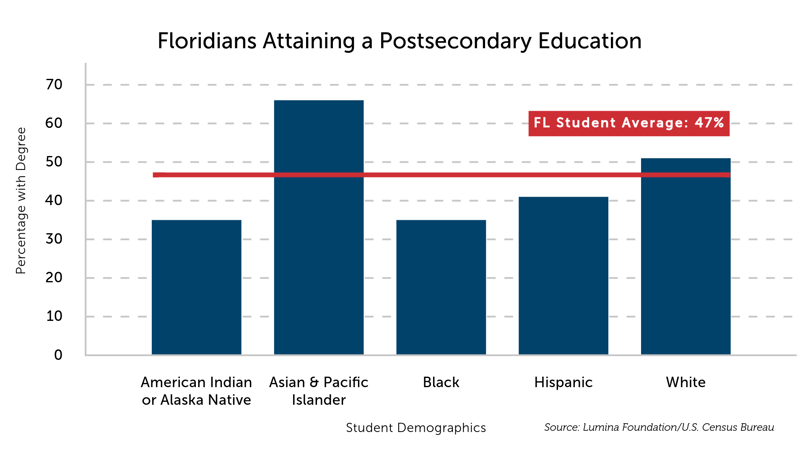
The Florida postsecondary education attainment data from the Lumina Foundation/U.S. Census Bureau includes Florida residents ages 25-64 with a two-year degree or higher in 2023. The data shows that American Indian or Alaska Native and Black students in Florida had the lowest rate of attaining a degree from a postsecondary institution.
Explore Helios research, program success stories and more happening in Florida.
